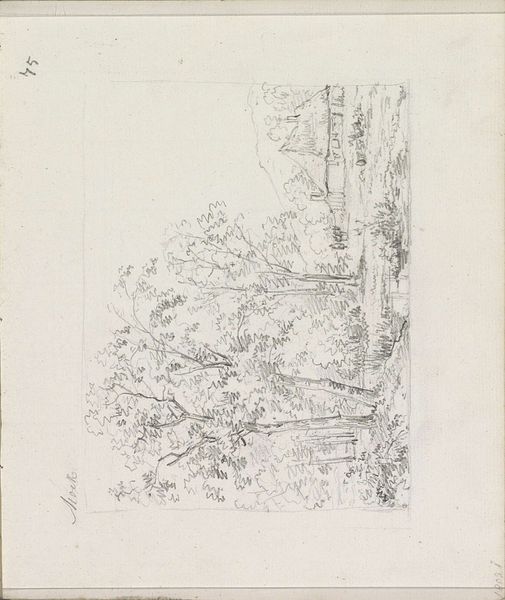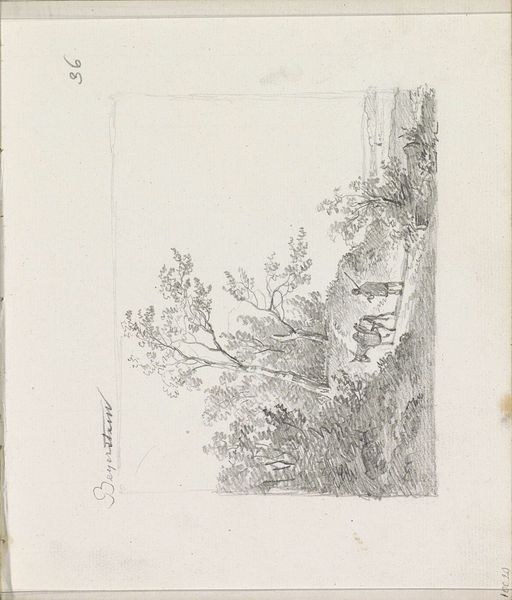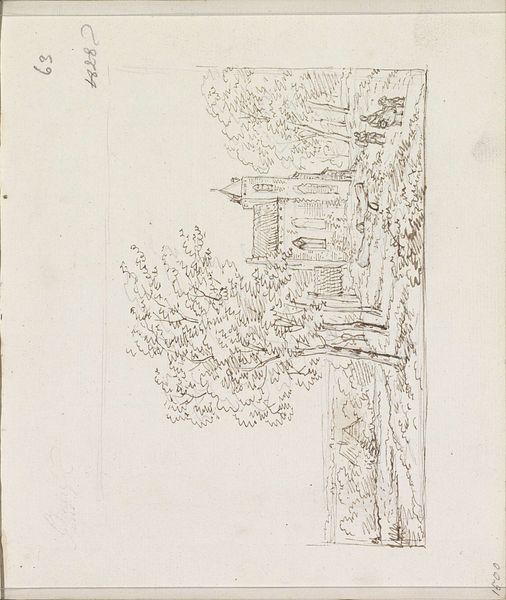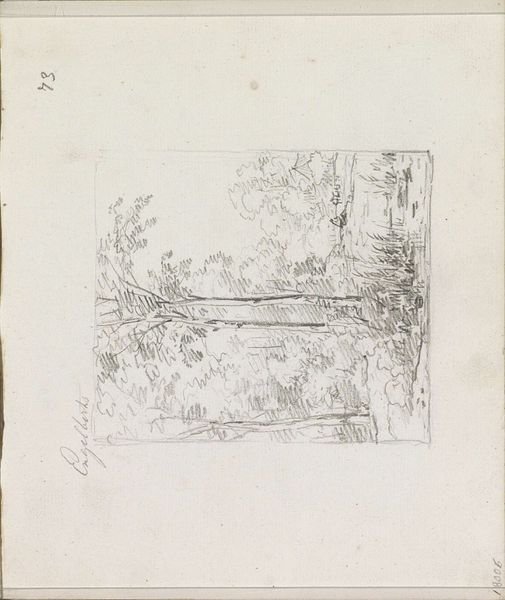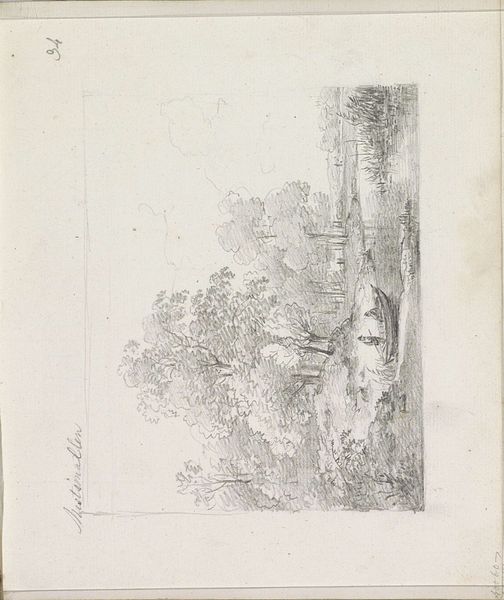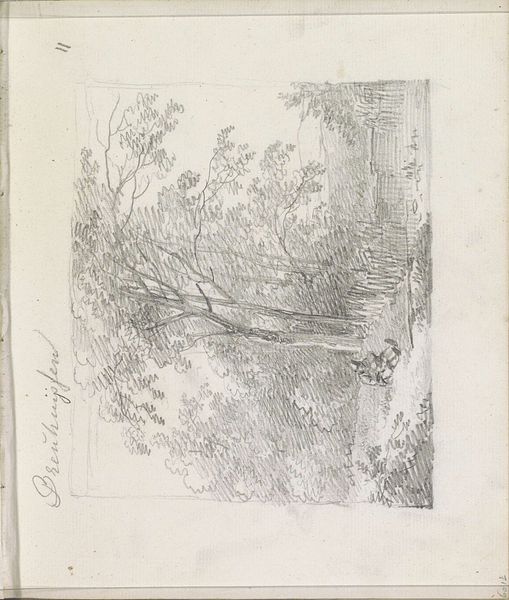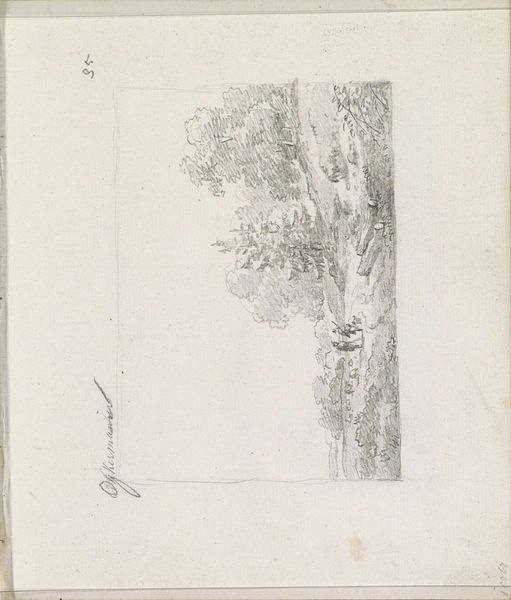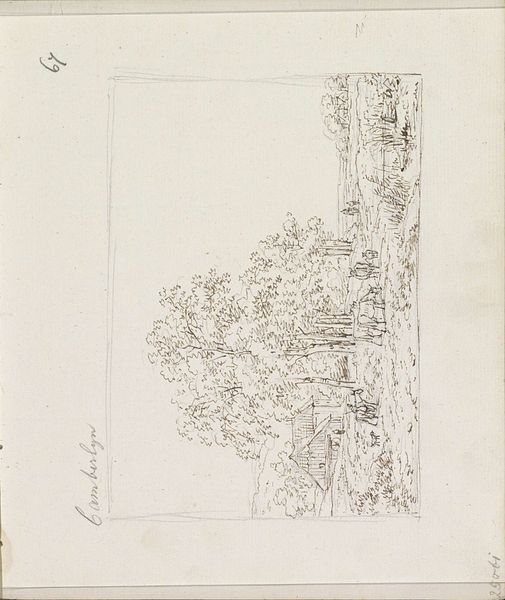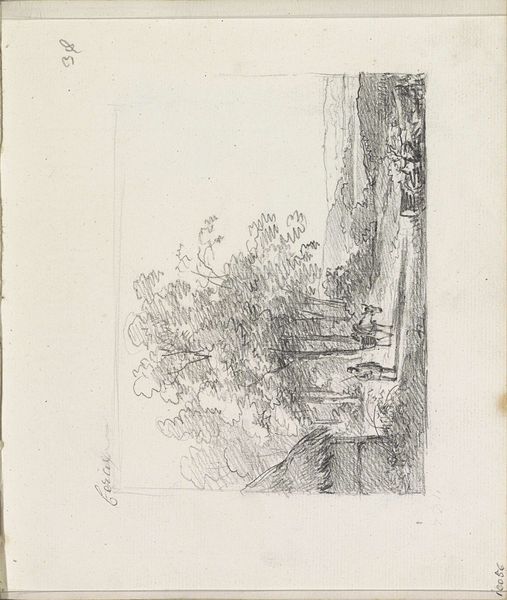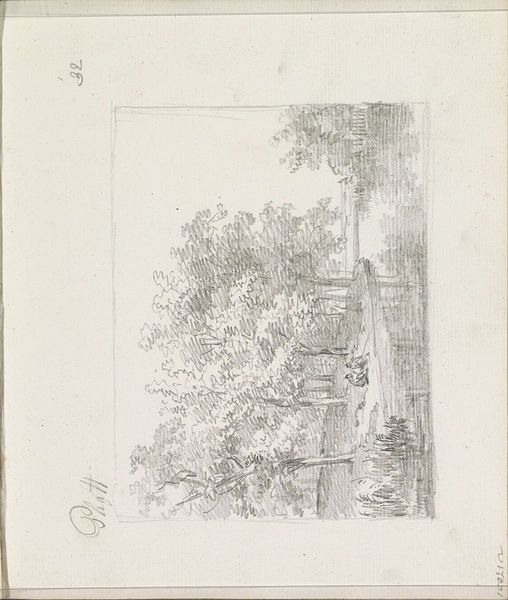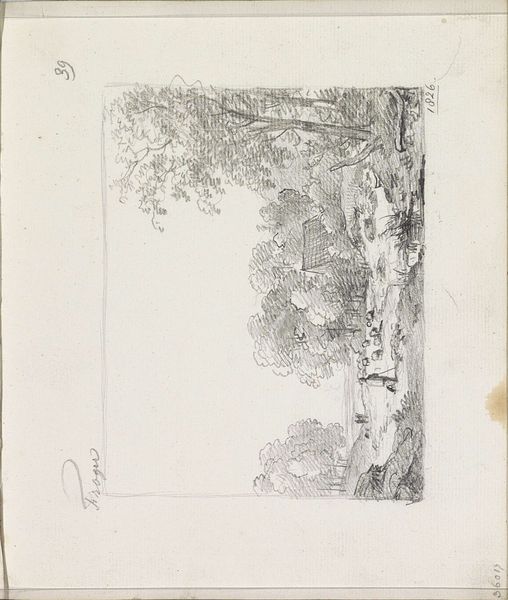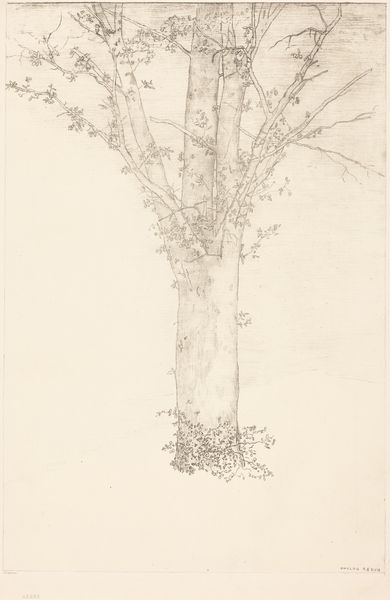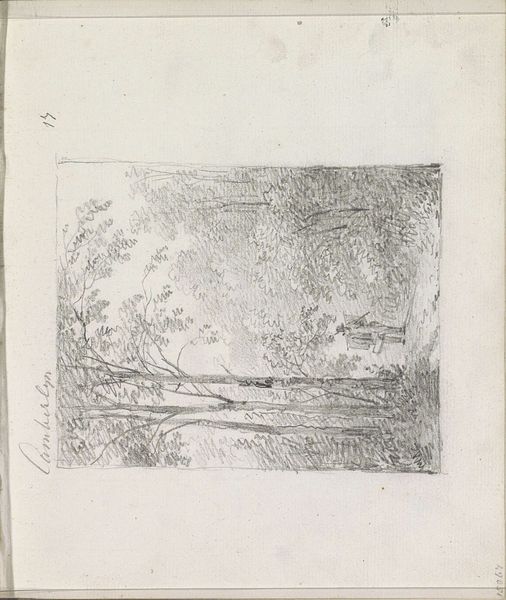
drawing, pencil
#
drawing
#
amateur sketch
#
light pencil work
#
pen sketch
#
pencil sketch
#
incomplete sketchy
#
landscape
#
sketchwork
#
detailed observational sketch
#
romanticism
#
pen-ink sketch
#
pencil
#
rough sketch
#
initial sketch
Copyright: Rijks Museum: Open Domain
Curator: Andreas Schelfhout's "Figuren, bomen en een huis aan een waterkant," dating from 1825 to 1828, is currently held at the Rijksmuseum. It’s a delicate drawing, primarily in pencil. Editor: My first impression is how light and airy it feels despite the density of the foliage. It's as if he captured the very breath of the landscape, using a simple pencil! Curator: I agree. Considering the socio-political atmosphere of the Netherlands during that period, grappling with the aftermath of Napoleonic wars and national identity, this landscape drawing could be seen as a form of subtle assertion of Dutch heritage and romantic ideals. Note how the humble, unidealized nature might reflect the ordinary citizen finding solace in their surroundings. Editor: Yes, and that comes through in his economical use of the medium. It looks as though Schelfhout sought to render the essence of each material component—the leaves, the water, the wooden architecture of the house in question with minimal intervention. Think about the role of accessible materials like pencils democratizing artmaking for emerging landscape artists! Curator: Absolutely. Also, think about this artwork within the framework of 19th-century Romanticism where nature wasn't just scenery. Nature offered an emotional escape. You see that clearly here in this piece—nature is sanctuary; even escapism, with possible utopian undertones. Editor: I’m also fascinated by how the visible pencil strokes contribute a certain authenticity, reminding the viewer of the artist’s hand, his labor and direct engagement with the paper—his active process of bringing the external world onto a two-dimensional plane. It acknowledges the materiality of image production. Curator: Indeed. Furthermore, viewing it through the lens of post-colonial theory, this romanticized landscape invites consideration of how landscape drawings served as tools of documentation and assertion of power through observation. But here, the modesty resists exploitation narratives and instead leans toward peaceful reflection. Editor: Well, to conclude, reflecting on the modest material choices offers valuable insight into accessible forms of artistic engagement of that time, linking both nature, artist, and drawing back into society. Curator: Precisely. A piece like this allows us to delve into both social histories and quiet expressions of identity that defined the Netherlands of Schelfhout’s era.
Comments
No comments
Be the first to comment and join the conversation on the ultimate creative platform.
